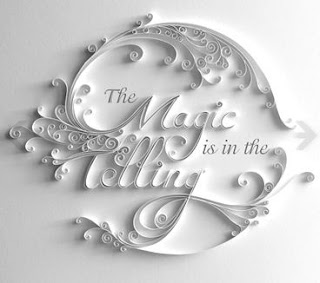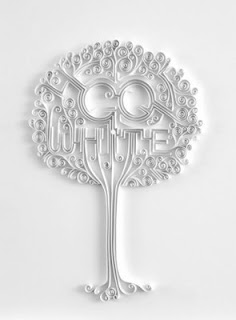After experimenting with the style of work that Yulia Brodskaya produced, and realising i was in-fact, rubbish at it. So i decided to move on and experiment with other methods.. I still wanted to use the paper to create my font but just didn't know how yet.
so after many more hours researching i found other artist that worked with paper and type and found interesting images and artwork such as..
(http://inspiredology.com/whos-your-type/)
After looking at this image and thinking of ways this could effect my work, i realised it reminded me of the pop-out effect sometimes found in books.. I then remembered another artist that id previously looked that related to the pop up art, during task one was Peter Callesen.
His work was created by using one single piece of paper and taking away from it shapes that would form another sculpture when folded away from it.
After looking at these images i thought of ways of using this idea but with type instead of sculptures, and here a quick attempt i did in my sketch book....
This is a really awful attempt, but i quite liked the ideas i had that i could use this technique with so decided to carry on with this idea.
The information that was compulsory to have on the poster was..
'100 Years of GF Smith Paper, Design museum, 1st-31st July.'
So after this awful attempt i thought i'd better do a good one, and these are the results..
After creating this piece i decided that i'd whack the images into photoshop and see what kind of poster ideas i could create...

















































